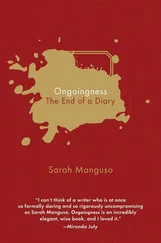And so the second proper name of my disease was Guillain-Barré syndrome .
The pathology is now understood as the immune system’s generation of antibodies targeting the peripheral nerves’ myelin, their protective and conductive protein sheath.
Landry’s paralysis came from nerves that had lost their myelin. And the protein in Guillain and Barré’s spinal fluid was made of that stripped-off myelin.
The condition may resolve spontaneously, relapse and remiss indefinitely, or progress and terminate in death.
In 1998, after my first year of graduate school, I put on my MedicAlert bracelet. It’s engraved:
TAKES PREDNISONE FOR CHRONIC IDIOPATHIC DEMYELINATING POLYRADICULONEUROPATHY
Chronic idiopathic demyelinating polyradiculoneuropathy. CIDP. That’s the shortest name for what’s wrong with me. It’s something like a chronic form of Guillain-Barré syndrome but not exactly, and there isn’t a proper name for it yet.
Approximately 80 percent of Guillain-Barré syndrome patients have a complete recovery, and about 10 percent recover with severe disability, though the death rate among patients is still about 2 to 3 percent even in the best intensive care units.
It’s hard to project these data onto my disease, CIDP. My disease is similar to but not the same as having Guillain-Barré syndrome over and over again, with no time to recover between bouts.
Some believe the clinical difference between Guillain-Barré syndrome and CIDP is subjective — that my disease was CIDP because I was sick for years instead of just a few weeks. Sometimes I think I might just have had a particularly bad case of Guillain-Barré syndrome.
Of course I’d rather have the common disease that people know how to treat, but there were times that I cherished my rare disease for its irrefutable proof of my specialness.
For its proof that my death, the end of the disease, whenever and in whatever form it came, was going to be remarkable.
Was the CIDP a physical manifestation of a spiritual illness?
Did the medication trigger the depression, or did the depression trigger the CIDP?
What about those yogis who can lie down on a bed of nails, then arise, streaming blood, then stop the flow of blood from each wound individually with the power of their minds? Isn’t frailty often a choice?
And if frailty is a choice, then isn’t an autoimmune disease a semi-intentional suicide?
What came first, the suicidal depression or the suicidal autoimmune disease?
Did they happen independently of each other, or not?
Sometimes I think that in the real universe, I am born already in possession of my CIDP, my depression, my whole life and death, and the text of this book. That I’m incapable of making the events of my life happen — either because they’ve already happened, or because they’re always happening, at every possible point in spacetime.
And then sometimes I think I’ve made everything happen, starting with making myself be born.
When I was sixteen, I was a volunteer intern at the local hospital.
I was given a white coat and a clipboard and accompanied the medical students on their clinical rounds.
I scrubbed in and watched vascular and orthopedic surgeries not knowing that in the future I’d have both kinds.
For several weeks in the pathology labs, I made slides from tissue samples suspended in wax.
One day a doctor and I visited a patient who was deeply asleep. She was an old woman, and her name was Anna.
I held Anna in my arms as the doctor listened for her breaths through a stethoscope held to her back. She wasn’t cold or waxy or lying in a pile of excrescence, so we spent a long time trying to find a pulse. She looked no older or frailer or sleepier than many of the other elderly patients.
When we were sure Anna had died, the respiratory specialist recorded the time as her time of death. Then the respiratory specialist and I went back to his office, and he told me it was all right to feel disturbed or upset by what had happened.
I didn’t feel upset, but I thought I should, so I stared at the wall and tried to look solemn.
The respiratory specialist said I could sit in his office for the rest of the afternoon with a couple of interns who were doing his paperwork. And so all afternoon I sat and stared at the wall and looked solemn, and periodically one of the interns would ask me if I felt all right, and I would say, solemnly, Yes.
One night, five years later, in the same hospital, a woman came into my room to take blood. But it wasn’t one of the phlebotomists. It was Louise, from the pathology lab, where I’d made slides from all those tissue samples all those years before!
I told her I’d been an intern in 1990, and that I’d liked working with her. She said she remembered me.
My shoulders still allowed my arms to rotate behind me, but my hands were too weak to resist even the slightest pressure. I couldn’t wipe my ass.
It’s hard to wipe someone else’s ass. After asking for a few extra swipes, I’d feel embarrassed, and then I’d say to hell with it even though my ass would itch like hell later and I wouldn’t have the strength to scratch it.
One of my nurses was a year younger than I was. She was the kind of person who would visit her brother and his family and see the house wasn’t clean and then clean the entire house. And she really knew how to wipe an ass. With a washcloth soaked in hot water, and then with a dry towel.
I thanked her so profusely the first time that she was moved to explain. I could wipe shit all day , she said, smiling.
Even blood didn’t bother her. Blood is for life , she’d said another time, when a line had popped out of my arm and I’d shot a blood geyser all over my bed.
I watched her clean up messes that horrified me, and she was cheerful, always.
One day she told me about the phlegm that formed in cancerous lungs. Sometimes she had to suction that phlegm. And sometimes it was black with necrotic tissue.
The young nurse said she’d never got used to the odor of that phlegm.
Sometimes I could hear people being suctioned. And sometimes above the slurping sound I heard the people yell in pain or in fear at seeing their own dead selves being sucked out of them.
The nerve damage associated with my disease is supposed to begin at the toes and move upward, as if you’re sinking in invisible, numbing quicksand.
Or sometimes it begins at the hands and moves up the arms to the torso — as if you’re standing in the quicksand on your hands.
During one of my hospitalizations, after being pricked with the pinwheel — a metal tool resembling a pizza cutter — I reported a spot of numbness on my abdomen. It was, coincidentally, about the size of a slice of pizza. The numb spot was surrounded by flesh that could feel. And that symptom wasn’t clinically normal for someone with my disease.
There was no diagnostic explanation for that numb spot, and so the following explanation was given: while there may in fact be a symptomatic area on my abdomen, the symptom I was reporting was not the correct one.
In my disease, the numbness starts distally, in the toes and fingers, and progresses proximally, toward the trunk. In my disease, there are no numb spots on the trunk. Those neurons aren’t stripped of their myelin until the arms and legs go numb first.
After considerable discussion among the doctors and their entourage of students, it was declared that I had indigestion, which was common in patients who had been lying on their backs for days or weeks as I had, and it was declared that since I was used to reporting all symptoms as numbness, I was feeling heartburn and reporting it as numbness.
Читать дальше












